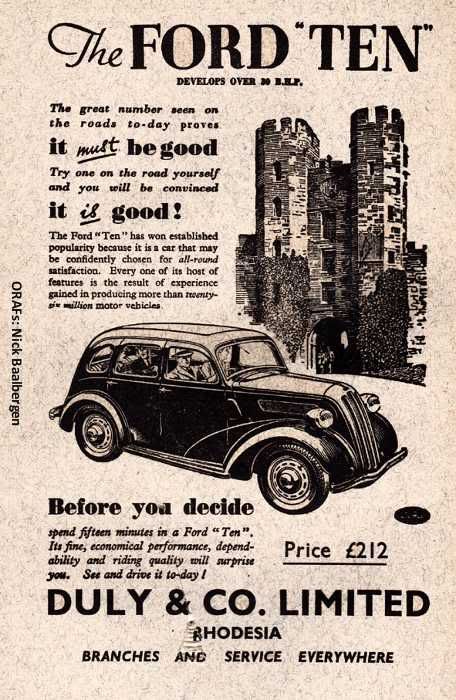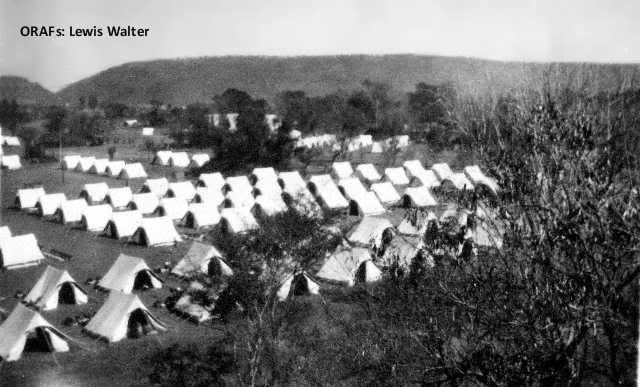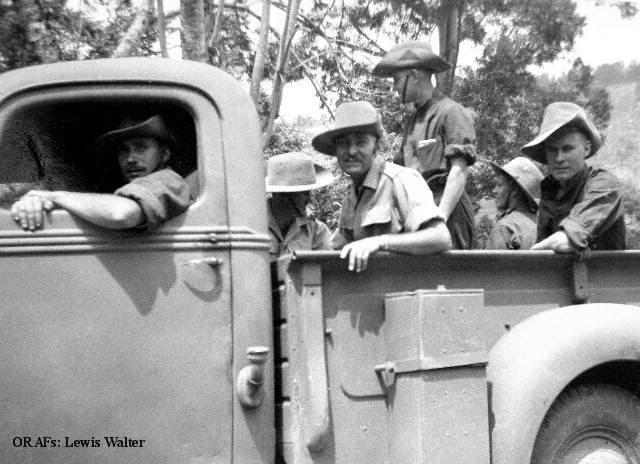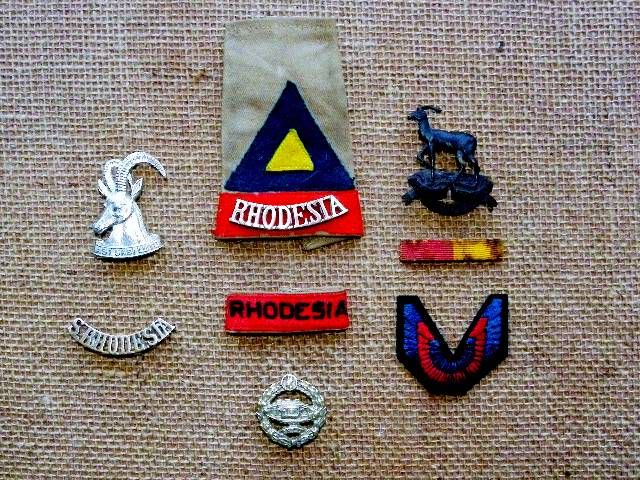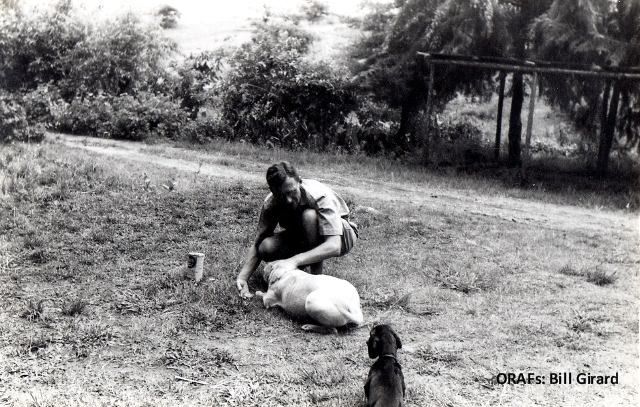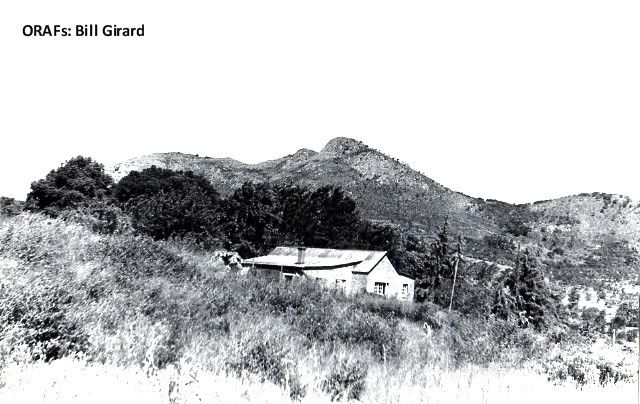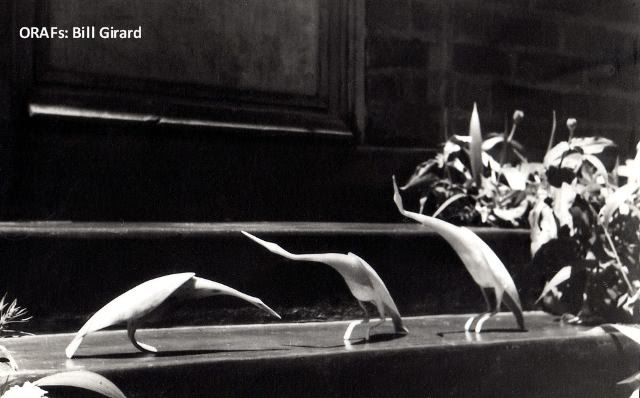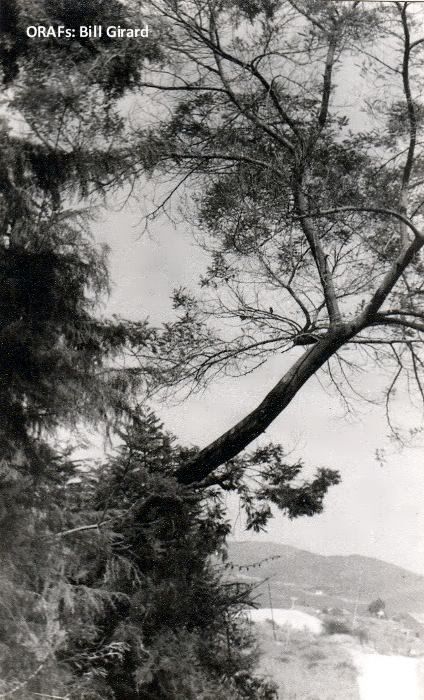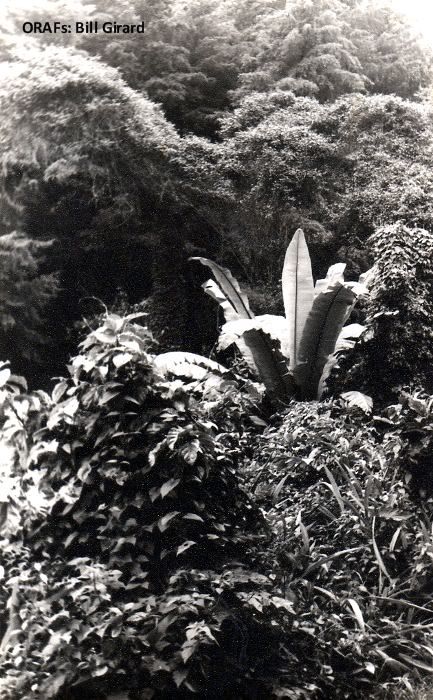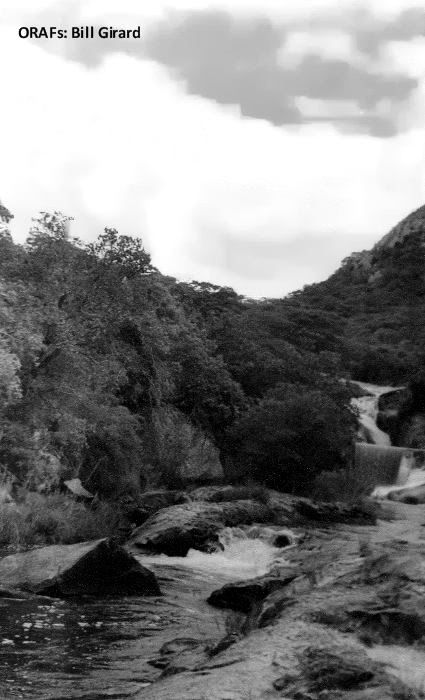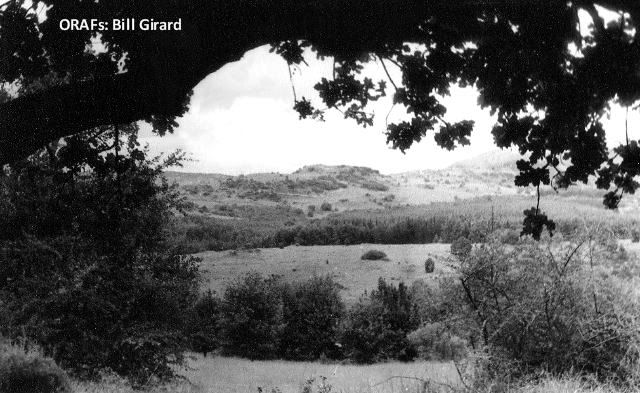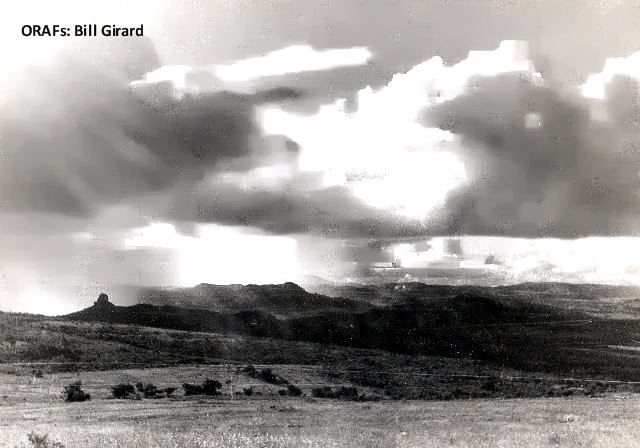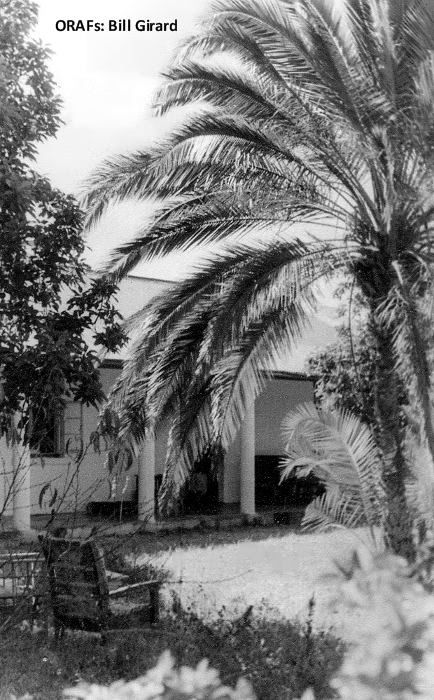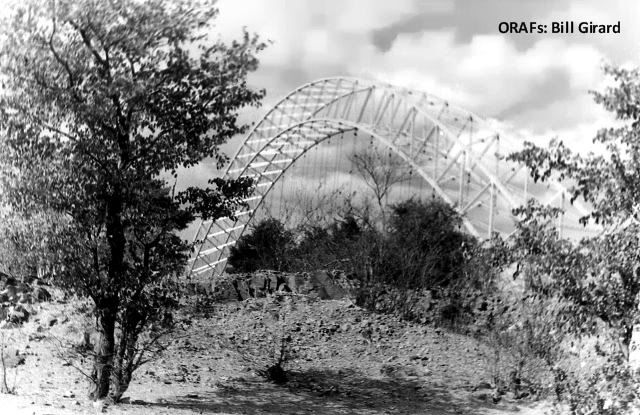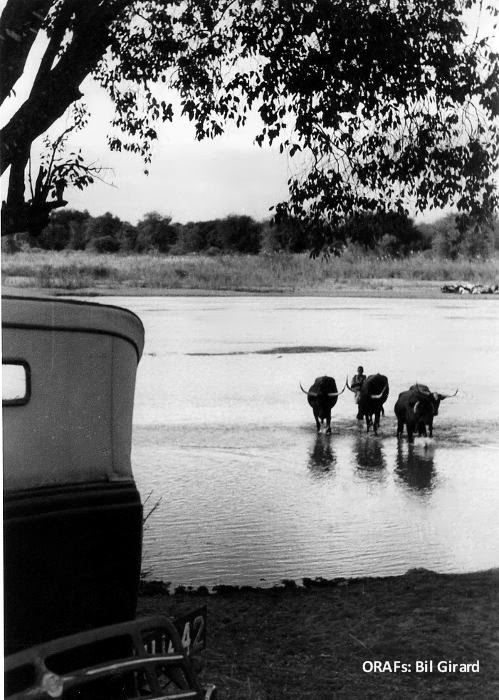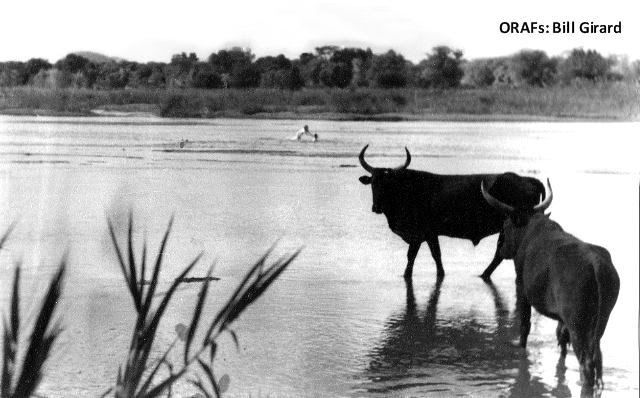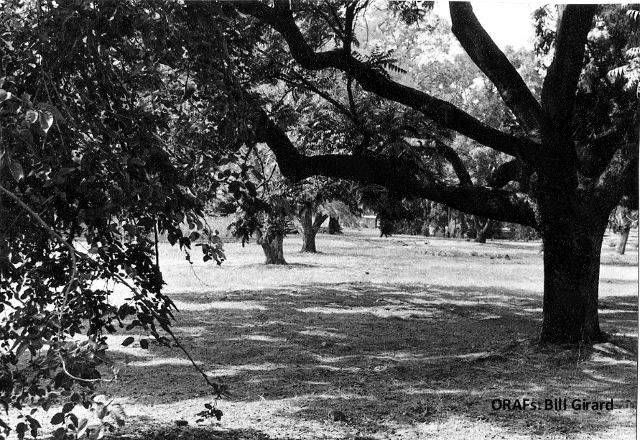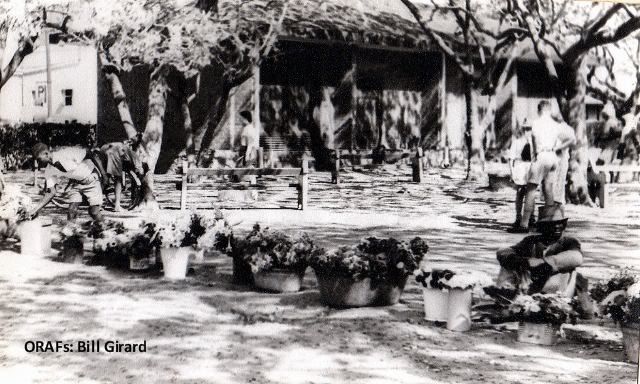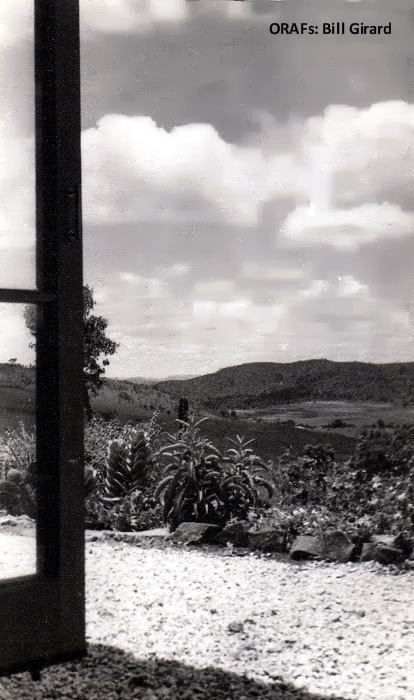Three-In -One Garden Memorial

About a mile and a half on the Umtali side of the road to Penhalonga a small road branches off to the east, and at the junction there is a sign which reads " Pioneer Nurses Memorial."
A short climb up this road brings one out to a delightfully situated and well-kept garden facing west.
There are terraced flower beds, a fine fig tree, and flowering shrubs. The first memorial is a seat made of concrete blocks set in a stone surround, and this has a metal plaque which records: —
" On this spot Bishop Knight-Bruce *s Nursing Sisters, Rose Blennerhasset, Lucy Sleeman, Beryl Welby, after an arduous up-country walk from the east coast and within a day of their arrival in Mashonaland opened a Camp Hospital and thereby inaugurated Nursing Services in the Colony. 14th July, 1891."
Then on the westerly edge of the garden there is a sundial mounted on a stone pedestal which bears a metal inscription reading: —
Erected in 1950
To the Memory of those who came first.
Col. P. D'Andrada
P. A. Campion
G. Crampton
G. B. Dunbar Moodie
W. J. Harrington
O. W. Harris
W. V. Harrison
O. D. Holliday
J. H. Jeffreys
E. De Kergariou
C. De Llamby
T. Luther
J. S. Maritz
Baron De Rezende
A. Vaughan Williams
These men were in the valley prior to the occupation of Rhodesia.
And the third memorial? Take a good look at the wrought iron gate that stands at the entrance to this garden.
At the top you will see the date 1853; in the centre the initials C.J.R.; and at the bottom the date 1953. It is a Rhodes centenary memorial.
End
Further notes by Nick Baalbergen:-
Attached is the article and my text of additional information on some of the individuals listed on the memorial plaques. The article comes from the book titled "Know Your Rhodesia and Know Nyasaland" - 300 Selections from 'The Rhodesia Herald', published in 1956.
There are some minor errors in the spelling of some surnames in the original article. I have spelt the names correctly in my additional text to the original article.
Background information on some of the individuals honoured on the memorial plaques.
The Pioneer Nurses Memorial
Memorial 'To Those Who Came First'
Both Baron de Rezende and Colonel Paiva d'Andrada were prominent figures in the Companhia de Moçambique, a company established in Portugal by Royal Charter for the purpose of administering the provinces of Sofala and Manica in Portuguese East Africa. Baron de Rezende was the Managing Director of the company while Colonel d'Andrada was in charge of the company's armed force. The area around Penhalonga was generally accepted to be within the sphere of influence of the Companhia de Moçambique, as Baron de Rezende had secured a concession from Chief Umtasa (Mutasa) to the mining right in his area. This became a point of contention with the arrival of the BSA Company in the area, resulting in numerous armed confrontations over the disputed boundary. Mutually agreed international boundaries were established some years later, when the terms of an existing Anglo-Portuguese treaty were re-negotiated. The Rezende Mine takes its name from Baron de Rezende, as does Rezende Street in Salisbury. Penhalonga, meaning long rocky mountain, also owes its name to its Portuguese origins.
George Benjamin Dunbar Moodie was tasked by Rhodes to recruit a suitable group of farmers from the Orange Free State to settle and farm the area of Gazaland (the Melsetter/Chipinga area of south east Manicaland). Having selected a number of suitable farmers, Dunbar Moodie appointed his uncle, Thomas Moodie, to lead the trek from the Orange Free State to Gazaland to establish the settlement.
End of Article,End
Further notes by Nick Baalbergen:-
Attached is the article and my text of additional information on some of the individuals listed on the memorial plaques. The article comes from the book titled "Know Your Rhodesia and Know Nyasaland" - 300 Selections from 'The Rhodesia Herald', published in 1956.
There are some minor errors in the spelling of some surnames in the original article. I have spelt the names correctly in my additional text to the original article.
Background information on some of the individuals honoured on the memorial plaques.
The Pioneer Nurses Memorial
Bishop Knight-Bruce recruited the three nursing sisters mentioned. He wrote an account of these years from his personal perpective. The book titled 'MEMORIES OF MASHONALAND' was reprinted as volume 13 of the 'Gold Series' of the Rhodesiana reprint series.
Two of the nursing sisters mentioned, Rose Blennerhassett and Lucy Sleeman, co-authored an account of their journey from Beira to the site of 'Old Umtali', as detailed in the plaque. The book titled 'ADVENTURES IN MASHONALAND' was reprinted as volume 8 of the 'Gold Series'. Their account would put a contemporary fictional adventure story to shame, as they travelled on foot from the port of Beira at the coast to the site of 'Old Umtali'. This was prior to the construction of the railway, though territory with a substantial population of predatory animals, where diseases such as blackwater fever and dysentery were endemic.Memorial 'To Those Who Came First'
Both Baron de Rezende and Colonel Paiva d'Andrada were prominent figures in the Companhia de Moçambique, a company established in Portugal by Royal Charter for the purpose of administering the provinces of Sofala and Manica in Portuguese East Africa. Baron de Rezende was the Managing Director of the company while Colonel d'Andrada was in charge of the company's armed force. The area around Penhalonga was generally accepted to be within the sphere of influence of the Companhia de Moçambique, as Baron de Rezende had secured a concession from Chief Umtasa (Mutasa) to the mining right in his area. This became a point of contention with the arrival of the BSA Company in the area, resulting in numerous armed confrontations over the disputed boundary. Mutually agreed international boundaries were established some years later, when the terms of an existing Anglo-Portuguese treaty were re-negotiated. The Rezende Mine takes its name from Baron de Rezende, as does Rezende Street in Salisbury. Penhalonga, meaning long rocky mountain, also owes its name to its Portuguese origins.
George Benjamin Dunbar Moodie was tasked by Rhodes to recruit a suitable group of farmers from the Orange Free State to settle and farm the area of Gazaland (the Melsetter/Chipinga area of south east Manicaland). Having selected a number of suitable farmers, Dunbar Moodie appointed his uncle, Thomas Moodie, to lead the trek from the Orange Free State to Gazaland to establish the settlement.
Thanks to Nick Baalbergen for sharing these memories with ORAFs.
Comments are always welcome - send them to Eddy Norris on orafs11@gmail.com
Labels: Memorial
